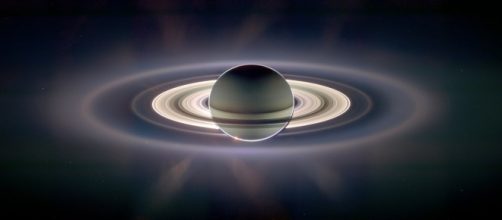Cassini spacecraft has successfully travelled through the atmosphere and rings of Saturn. This all happened after having lost contact with the team that is in charge of this mission. The spacecraft was programmed to take images of Saturn while on this phase of the mission. Although, scientists knew that small particles opposite from the direction of the spacecraft could potentially damage it, the spacecraft used the large dish antenna oriented in the direction of incoming ring particles to safeguard all of its equipment.
Saturn´s rings
These are a system of rings composed primarily of water ice and traces of silicates and tholins, which range in size form 1 cm to 10 meters and extend from 7,000 to about 80,000 km in the plane of Saturn´s equator.
The thickness of the rings is range from 10 meters to 1 km. It´s believed that Saturn´s rings may be as old as the planet. There are two main theories about their formation. One of them states that the rings are the left over matter from which the planet formed. The other one affirms the matter the make up the rings formed part of a moon which disintegrated after colliding with an asteroid or a large comet.
Voyage through Saturn and its rings
The gap separating Saturn and its rings is approximately 2,000 km (1,500 miles) wide. It was believed that small particles the size of smoke could be in the plane of the rings and could have caused damage to the spacecraft; for this reason, Cassini used its dish-shaped antenna as a shield.
This prevented that the space vehicle had a frontal encounter with damaging particles. During the ring plane crossing, which took approximately 20 hours, the spacecraft was not able to communicate with earth; however, the science instruments were programmed to gather data of this region of Saturn.
Cassini-Huygens
Cassini is a space probe that was launched in 1997 and arrive at Saturn on 2004. It´s the fourth spacecraft to visit Saturn and the first one to have been orbiting the planet. Since its arrival it has studied the planet and its rings; discovered icy plumes on Enceladus; took vertical images of Saturn’s rings and discovered giant hurricanes on Saturn´s poles. The Huygens lander, which was part of the Cassini mission, landed successfully on one of Saturn´s moons-Titan and has studied its chemistry the images sent to earth have revealed that Titan possesses rivers, lakes and oceans, just like the earth. The spacecraft trajectory will eventually make it dive into Saturn’s atmosphere, putting an end to Cassini´s mission which scientists have dubbed, ¨Cassini’s finale.¨

